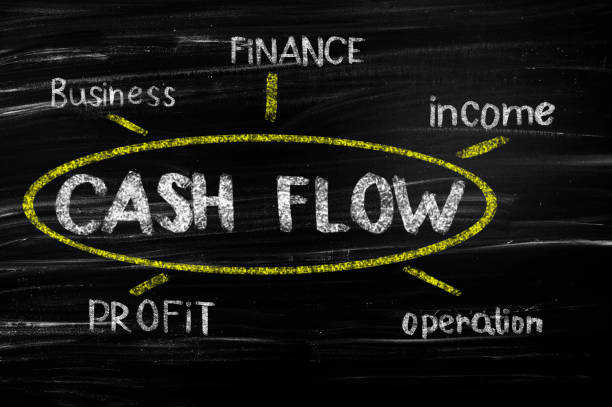Table of Contents
Last updated on September 1st, 2025 at 03:12 pm
In the complex world of corporate finance, understanding financial statements is crucial for making informed business decisions. Among these, the cash flow statement holds a significant place. For those aspiring to take on roles like the Chief Financial Officer (CFO), mastering the cash flow statement is imperative. This comprehensive article will delve into what is cash flow statement, its structure, examples, and the methods of calculating cash flow.
What is Cash Flow Statement?
A cash flow statement monitors the inflow and outflow of cash and offers details about the financial stability and operational effectiveness of a business.
The CFS evaluates a firm’s ability to create enough cash flow to cover its operational costs and pay off its debt. In other words, it gauges how well an organisation manages its financial situation. The balance sheet and the income statement are enhanced by the CFS, one of the three primary financial statements.
Understanding what is cash flow statement involves recognising its role in highlighting the actual cash position of a business, which is crucial for assessing its financial health. For CFOs, this knowledge is instrumental in ensuring that the company has enough liquidity to meet its obligations and capitalise on growth opportunities.
Structure of the Cash Flow Statement
The structure of the cash flow statement is divided into three main sections:
- Operating Activities: This section details the cash generated or used by the core business operations. It includes net income, adjustments for non-cash items (such as depreciation and amortization), and changes in working capital components like accounts receivable, accounts payable, and inventory.
- Investing Activities: Here, the focus is on cash flows related to the acquisition and disposal of long-term assets, such as property, plant, equipment, and investments. This section shows the company’s investment in its future growth.
- Financing Activities: This part records the cash flows associated with the company’s capital structure. It includes transactions involving debt, equity, and dividends. Activities such as issuing shares, repurchasing shares, borrowing, and repaying loans are reported here.
The structure of the cash flow statement is designed to provide a clear picture of how cash moves through a company, from generating revenue to investing in assets and managing debt and equity.
Cash Flow Statement Example
To better understand the cash flow statement, let’s look at a simplified cash flow statement example:
ABC Corporation Cash Flow Statement for the Year Ended December 31, 2023
Operating Activities:
- Net Income: $150,000
- Depreciation: $25,000
- Changes in Accounts Receivable: $10,000
- Changes in Inventory: -$5,000
- Changes in Accounts Payable: $15,000
- Net Cash from Operating Activities: $195,000
Investing Activities:
- Purchase of Equipment: -$50,000
- Sale of Investments: $20,000
- Net Cash from Investing Activities: -$30,000
Financing Activities:
- Issuance of Shares: $100,000
- Dividends Paid: -$20,000
- Repayment of Loans: -$30,000
- Net Cash from Financing Activities: $50,000
Net Increase in Cash and Cash Equivalents: $215,000
- Cash and Cash Equivalents at the Beginning of the Year: $50,000
- Cash and Cash Equivalents at the End of the Year: $265,000
This cash flow statement example illustrates how different activities contribute to the company’s cash position at the end of the period.

How Cash Flow Is Calculated
Understanding how cash flow is calculated involves grasping the methods used to derive the figures in the cash flow statement. There are two primary methods: the direct method and the indirect method:
- Direct Method: This method lists all major cash receipts and payments during the period. It provides a straightforward view of cash inflows and outflows from operating activities, such as cash received from customers and cash paid to suppliers and employees.
- Indirect Method: This method starts with net income and adjusts for non-cash transactions and changes in working capital. It reconciles the net income to the net cash provided by operating activities. Most companies prefer the indirect method due to its simplicity and the availability of necessary data from the income statement and balance sheet.
For example, using the indirect method:
- Start with net income: $150,000
- Add non-cash expenses: $25,000 (depreciation)
- Adjust for changes in working capital: $20,000 (accounts receivable, inventory, and accounts payable changes)
- Net cash from operating activities: $195,000
Knowing how cash flow is calculated enables CFOs to accurately analyse and interpret the cash flow statement, providing critical insights for strategic decision-making.
The Significance of Cash Flow Statements
The cash flow statement is invaluable for several reasons:
- Liquidity Assessment: It helps in assessing the company’s ability to meet its short-term liabilities.
- Financial Health: It offers a clear picture of the company’s financial health by showing how well it generates cash to fund operations and growth.
- Investment Decisions: It aids in making informed investment decisions by providing insights into cash flows from operating, investing, and financing activities.
- Creditworthiness: Lenders and investors often use the cash flow statement to evaluate a company’s creditworthiness and investment potential.
Conclusion
Understanding what is cash flow statement, its structure, and the methodology for calculating cash flow is crucial for anyone aiming for a senior financial role, especially as a CFO. A well-prepared cash flow statement provides a transparent view of a company’s cash position, essential for strategic planning and financial management.
If you’re looking to deepen your understanding and enhance your skills in financial management, consider enrolling in the Chief Financial Officer Programme offered by Imarticus Learning. This program is designed to equip you with the knowledge and tools necessary to excel in high-level financial roles. Visit Imarticus Learning to learn more and take the next step in your career!

